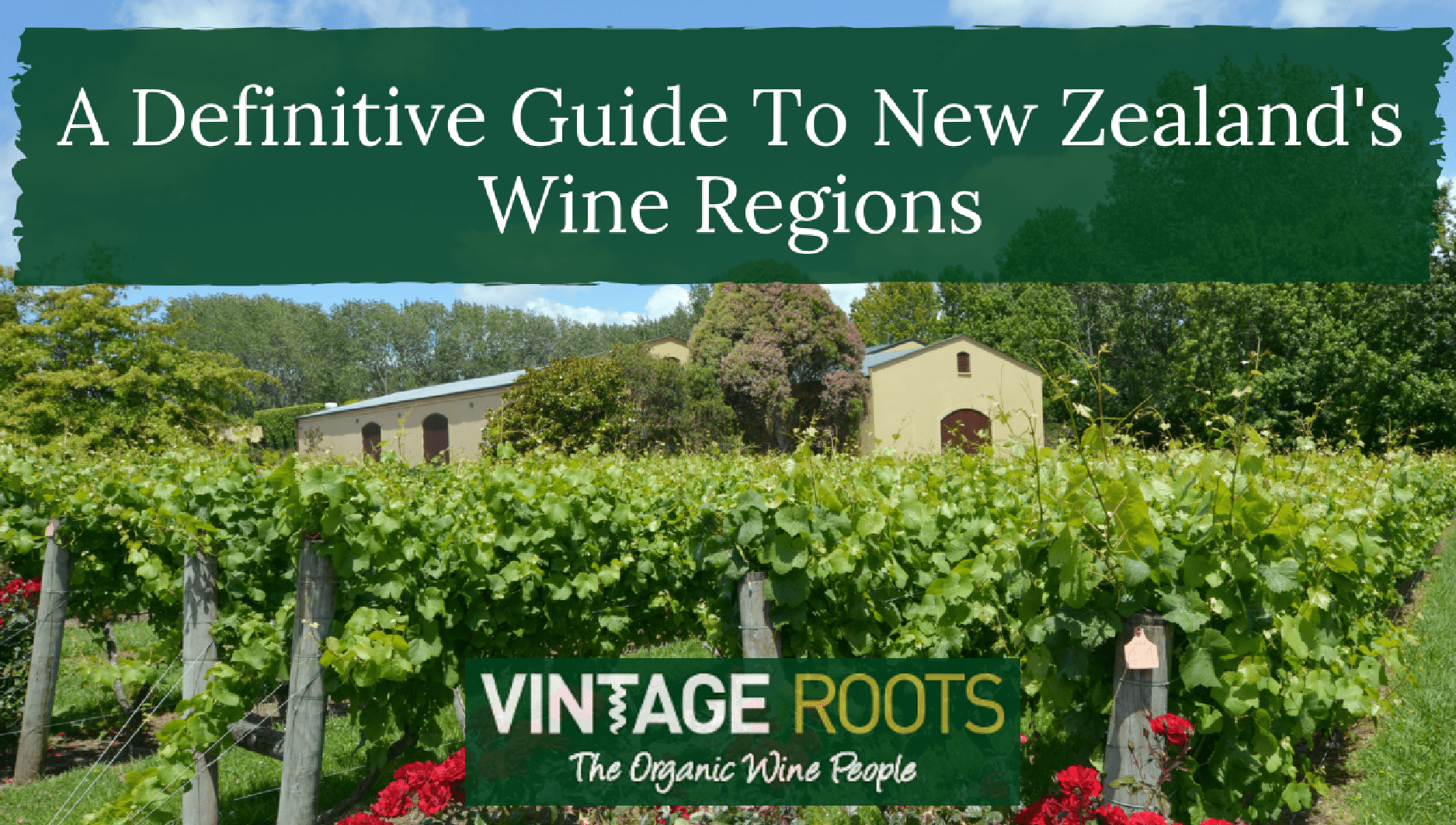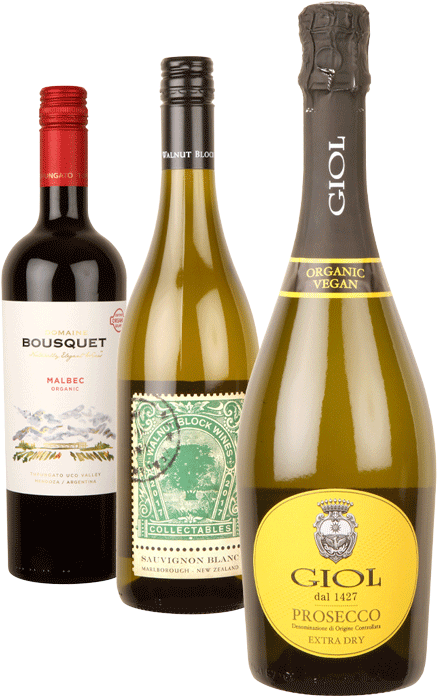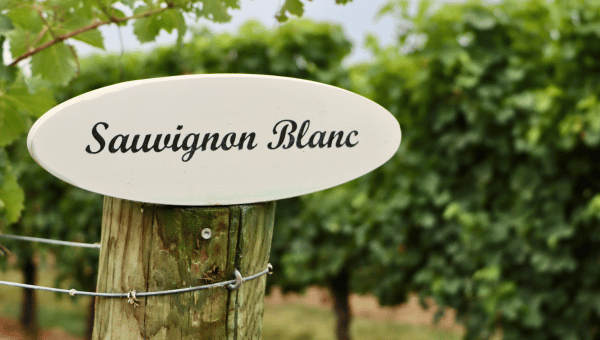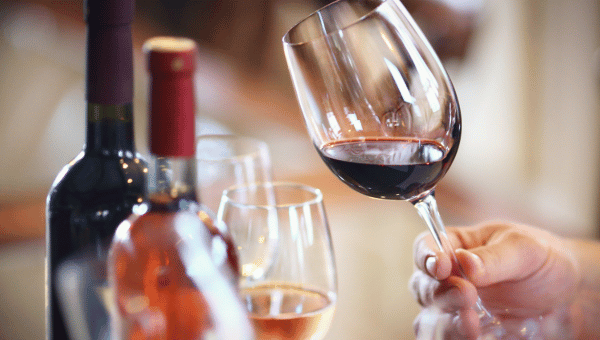A Definitive Guide to New Zealand’s Wine Regions

When people think of New Zealand, rugby and Lord of the Rings may spring to mind (it’s where the movies were filmed, after all). However, New Zealand is fast becoming known as the home of some of the best New World wines. Unknown as a wine producer until the 1980s and ‘90s, it quickly made a name for itself with an aromatic, fruity style of Sauvignon Blanc that is now ubiquitous across the UK, but there’s much more to NZ than SB…
Below we’re going to get into everything you want to know about New Zealand wine: the types of wine for which the country is famous, the history of wine in New Zealand, the many New Zealand wine regions, and the best foods to pair the wines with. We have even come up with a few recommendations we’re sure you’ll enjoy. By the time you reach the end of this page, you’ll know everything there is to know about the amazing wines of New Zealand…
The Most Popular Wines of New Zealand
New Zealand produces close to 250 million litres of wine every year. The majority of the wine is Sauvignon Blanc (the wine for which New Zealand is most famous), but other New Zealand wines include Pinot Noir, Merlot, Riesling, Cabernet Sauvignon, and Chardonnay. Though less than 1% of the world’s wine comes from New Zealand, the low quantity has nothing to do with the quality of its wines – it is one of the world’s largest exporters of wine by value.
Here’s what you need to know about the various wines for which New Zealand is famous:
Sauvignon Blanc
Sauvignon Blanc was the grape that put New Zealand wines on the map. They took a classic Loire style Sauvignon (lean, minerally, citrusy) and turbo-charged it to give super ripe tropical fruit flavours such as passionfruit and guava that had never been tasted in wine before. This fruity, accessible style swept across the globe winning legions of fans, displacing France as the go-to country for Sauvignon.
The fascinating thing about New Zealand Sauvignon Blanc is that it inherits both Old and New World traits. It offers the limey acidity and pungency of an Old World (French) Sauvignon Blanc, but has the exotic aromas and expressiveness found warmer climates. This makes it a unique type of wine, and one of the most sought after all over the world.

Sauvignon Blanc occupies more than 20,000 hectares of wine-growing country, making it the most planted of the New Zealand grapes, and it makes up the vast majority of exports.
New Zealand has always been a supporter of organics and sustainability in wine, and they have a goal of having 20% of the industry certified organic by 2020.
Here are some of our favourite organic New Zealand Sauvignon Blanc wines:
Walnut Block Sauvignon Blanc
This white wine comes from Marlborough, the most famous of all New Zealand’s wine regions, and is famous for its crisp acidity and vivid flavours. The palate has concentrated flavours of ripe tropical fruits and passionfruit, with a soft, smooth mouthfeel. Perfect for enjoying on a hot day!
Richmond Plains Nelson Sauvignon Blanc
Richmond Plains Nelson Sauvignon Blanc – This South Island Sauvignon Blanc comes from Nelson, one of the best, but least famous wine-growing regions in the country. Nelson Sauvignons tend to have a slightly ‘greener’, less ripe character that’s more similar to Loire Valley styles. We love the notes of capsicum and gooseberry in this wine, which are followed by bursting flavours of green apple, citrus, lime, and more gooseberry. See if you can taste those nettle and mineral tones beneath—a true delight.
The Supernatural Sauvignon Blanc
For a quality North Island wine, this Hawke’s Bay Sauvignon Blanc is worth every penny. The low-sulphur wine has beautiful peach and grapefruit aromas and notes of spice and smoke. This is a different style with more savoury elements, and less focus on the ripe, tropical fruits.
Green Glow Skin Fermented Sauvignon Blanc
This Sauvignon Blanc from Hawke’s Bay is 100% skin-fermented, giving it a gorgeous golden colour and creamy texture. The aromas of cut grass, stone fruits, and citrus blend perfectly with the sweet spice and dried apricot palate. A truly unique wine that’s made using skin contact during fermentation, giving added texture and flavour to the wine.
Red Blends and Bordeaux Varieties
Most of the red wines produced in New Zealand are blends (with the notable exception of Pinot Noir), using grapes like Cabernet Sauvignon, Cabernet Franc, Merlot, Malbec, and Petit Verdot. Syrah, Sangiovese, Tempranillo, and Montepulciano have recently become more popular for the blends produced in New Zealand.
Red wine grape planting has really only been popular since the 1980s, with the vast majority of the red grapes planted being either Cabernet Sauvignon and Merlot. More Bordeaux-style grapes have been planted in the last couple of decades, leading to improvement in both the quantity and quality of Bordeaux-style blends.
86% of the grape production used for Bordeaux blends come from Hawke’s Bay. Waiheke Island is also famous for its red wine output.

The flavours of New Zealand red wine tend to be forward and fruit-driven, with restrained hints of oak. The colour is deep and rich, thanks to the early-maturing fruit. The Bordeaux blends tend to have better ageing ability than the other red blends.
Pinot Noir
New Zealand is famous for its Pinot Noir wines, which have only been produced since the 1980s. The Canterbury, Central Otago, Marlborough, and Martinborough regions are all well-known producers of Pinot Noir.
This difficult-to-grow grape hasn’t always flourished in New Zealand, but recently it has become one of the most popular of the New Zealand wines. Wine tasters and critics have compared New Zealand Pinot Noir to the fine wines of Burgundy thanks to its earthy flavours and savoury personality. There is a complexity to New Zealand Pinot Noir that other New World Pinot Noirs can’t always match.
The flavours of the more popular Pinot Noirs include cherry, sweet plum, and thyme, though the cooler sub-regions tend to produce Pinot Noirs with spice and herb notes.
Want a quality New Zealand Pinot Noir to try? We have chosen two we believe you’ll love:
Walnut Block Nutcracker
This Marlborough red is a ripe and full-flavoured Pinot, with intense cherry fruit, earth, and herbaceous characters, soft tannins, and rich flavours. Extremely popular at tastings.
Richmond Plains Nelson Pinot Noir
Hailing from Nelson, this Pinot Noir delivers complexity and variety in the style of a fine Burgundy. The complex nose of dark cherry, raspberry, and chocolate is the perfect complement to the earthy, forest fruits and cherry palate.
The Evolution of the New Zealand Wine industry
New Zealand hasn’t always been a wine-producing country. In fact, wine making in New Zealand only dates back to the mid-1800s. The oldest existing vineyard in New Zealand was planted in 1851 in Hawke’s Bay. By the late 1800s, Pinot Noir and Syrah grapes had already come to New Zealand, and the government began to be interested in planting grapes to produce wine.
However, only in the 1960s and 70s did New Zealand really begin the production of quality wine using noble grape varieties—thanks to the popularity of the New Zealand youth traveling abroad and experiencing the cultures of Europe, including the wine-making cultures.
Marlborough was the first region to be planted, in the 1970s. The first superior Sauvignon Blanc was produced in 1977, and exports to the UK began in the mid 1980s. The success of this wine (and others) launched the wine-making industry in New Zealand, to the extent that there was a glut of planted vines in the 1980s. The New Zealand government actually had to pay workers to pull up vines.
By the 1990s, New Zealand had become famous for its incredibly high quality Sauvignon Blancs, and there was no turning back for wine-making in New Zealand. Production rose from 56.4 million litres per year in 1995 to 248.4 million litres per year in 2013, with more than 35,000 hectares of grape-growing land around the country.
New Zealand Wine Regions
As we’ve seen, there are certain regions in New Zealand that are more famous than others. But every New Zealand wine region has something to offer. Below, we’ll take a look at the most popular regions to help you know which wines to choose from each:
The South Island of New Zealand is home to the largest amount of grape-growing land in the country. Some of the most famous wines from New Zealand come from the regions here.
- Nelson
Nelson is a beautiful, sunny region, with many tourist attractions and a spectacular wine-growing landscape. The climate is gentle with plenty of sun, as well as both high and low altitudes for growing a variety of grapes.
• Most popular wines: Pinot Noir, Sauvignon Blanc (dominant), Chardonnay
• Size: 1,123 hectares
• 2.4% of New Zealand’s wine production comes from the Nelson region
- Marlborough
Marlborough is New Zealand’s largest wine region, as well as its most famous. The majority of the New Zealand wines known around the world come from Marlborough. The variety of terroir and climate in Marlborough makes it one of the most versatile growing regions in New Zealand. The climate here is sunny and dry yet not too hot, with low rainfall, moderately fertile soil, and excellent drainage. The result is excellent quality wine!
• Most popular wines: Sauvignon Blanc (dominant), Pinot Noir, Chardonnay, Riesling, Viognier
• Size: 22,900 hectares
• 77% of New Zealand wine comes from this region

- Canterbury
Canterbury / Waipara Valley – The extensive lowlands of this New Zealand region are right next door to the “Southern Alps”, and this unique geographical feature makes for one of the best growing regions for outstanding wines. The region is famous for its cool, dry climate, long hours of sunshine, and a longer-than-average growing season. The result: expressive wines with intense flavours, complexity, and richness.
• Most popular wines: Pinot Noir (dominant), Chardonnay, and Sauvignon Blanc
• Size: 1,448 hectares
• 2.6% of the wine produced in New Zealand comes from this region
- Central Otago
Yet another of New Zealand’s most famous wine regions, Central Otago offers spectacular landscapes (mountains and valleys) and is home to some of the most vivid white wines in the country. The snow-capped mountains, ravines, rivers, and unique combination of altitude, climate, and terrain makes this one of the best wine-growing regions in New Zealand. The climate can be extreme (cold), but wines grown in this region are famous for their vivid flavours and bold intensity.
• Most popular wines: Pinot Noir, Chardonnay, Riesling, Pinot Gris
• Size: 1,932 hectares
• 2.4% of New Zealand wines come from this region
The North Island offers less extreme climates for grape-growing. Instead of the snow-capped mountain peaks and deep ravines of South Island, the land here is flatter and more lush—perfect for growing a wide variety of grapes.
- Hawke’s Bay
As the oldest and second-largest wine-growing regions in New Zealand, Hawke’s Bay is famous for its high sunshine and mild climate. The growing season is long, and a wide variety of grapes are grown here.
• Most popular wines: Pinot Gris, Syrah, Chardonnay, Sauvignon Blanc, Merlot, Malbec, Cabernet Sauvignon
• Size: 4,774 hectares
• 10% of New Zealand wines come from Hawke’s Bay
- Auckland
The capital of New Zealand is situated amid one of the largest and most diverse wine-growing regions in New Zealand. The region is large and highly geographically diverse, with clay-rich volcanic soil and a temperate climate. This, added to its proximity to the capital, makes it one of the most economically important wine-growing regions in the country.
• Most popular wines: Syrah, Merlot, Malbec, Chardonnay, Pinot Gris, Cabernet Franc, Cabernet Sauvignon
• Size: 348 hectares
• 0.3% of New Zealand wine comes from Auckland

- Gisborne
The land in this region is famous for its lush greenery, high sunshine, and gorgeous views. Some of the most critically acclaimed wines in New Zealand come from Gisborne, and this is the third-largest wine-producing region in the country.
• Most popular wines: Merlot, Sauvignon Blanc, Chardonnay, Pinot Gris, Viognier
• Size: 1,915 hectares
• 3.7% of the wine produced in New Zealand comes from Gisborne
Some of the other, lesser-known wine regions of North Island include Matakana, Waikehe Island, Kumeu, Waikato, the Bay of Plenty, and Wairarapa. These regions and sub-regions are all excellent sources of quality New Zealand wines, but they’re less frequented and recognised.
Our Tips for Food Pairing
If you’re visiting New Zealand to take in the wines, you can’t leave the country without trying some of the delicious New Zealand food! You’ll find that New Zealand has a wide range of culinary delights—both sweet and savoury. Below are a few of our favourite New Zealand foods, along with wines that pair perfectly with each dish:
- Pavlova – Australia and New Zealand both claim they’re the ones who created this amazing dessert, but either way it’s a must-try while in New Zealand. The kiwi, passionfruit, and strawberry-covered meringue is an absolutely stunning explosion of flavours, one that pairs perfectly with the vivid Sauvignon Blancs for which New Zealand is famous. It’s also a perfect match for the rare, but delicious late harvest Rieslings and sweet wines made in tiny quantities across the country.
- Kiwi Meat Pie – Kiwi Meat Pie is the New Zealander’s take on the classic British Meat Pie, and a worthy rival indeed! The soft pastry crust filled with minced beef and topped with tomato sauce is fragrant, rich, and flavourful. You can find a wide assortment of pies at any time of day or night, and they’re the perfect go-to treat when you’re feeling hungry. Pair your meat pie with a rich red (Merlot, Cabernet Sauvignon, or red blend). If there are mushrooms in the pie, you’ll want to try a Pinot Noir.
- Whitebait Fish Fritter – Yet another Kiwi version of British food, the Whitebait Fish Fritter is the NZ alternative to “fish and chips”. This “crispy omelette” is served with lemon, tartar sauce, and a salad, meaning it’s bright and fresh—perfect for pairing with one of New Zealand’s famous Sauvignon Blancs.
The truth is that most New Zealand restaurants will offer you a bottle of Sauvignon Blanc to pair with everything, and it’s treated as an essential at the lunch or dinner table due to its versatility with all foods from British-influenced dishes to Asian food.
If you’re looking for a new wine to try and don’t mind something new and unique, you’ll definitely want to give New Zealand wines a try. The world-famous NZ Sauvignon Blanc isn’t the only wine worth trying—everything from the Pinot Noirs to the red blends are unique, flavourful, and vibrant.
New Zealand truly offers an amazing assortment of wines that are worth tasting!












